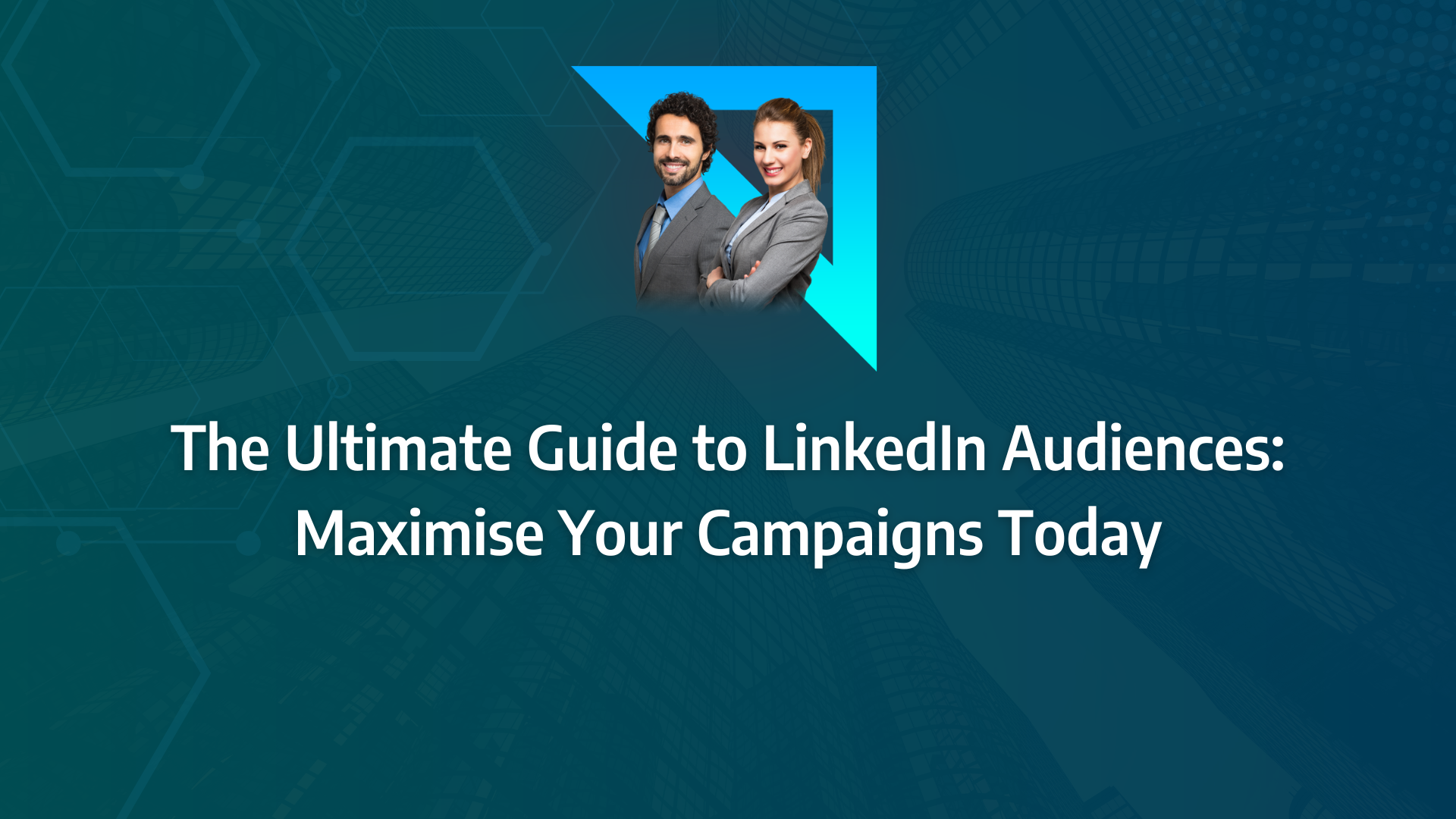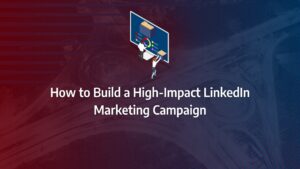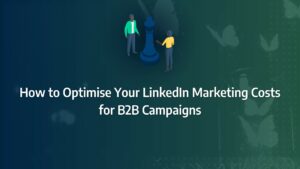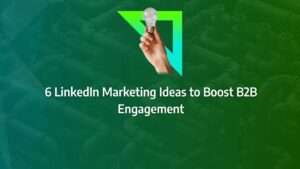Unlocking the full potential of LinkedIn audiences could be the game-changer your marketing strategy needs. Imagine tailoring your campaigns to reach precisely the right professionals—those most likely to convert and boost your ROI. But how do you ensure your message hits the mark every time?
The key lies in mastering LinkedIn’s powerful audience segmentation tools, from lookalike audiences to dynamic retargeting. Curious about how industry leaders are leveraging these tools for unmatched campaign success? In this guide, you’ll discover the step-by-step process to maximise your LinkedIn audience reach.
- Master LinkedIn Audience Segmentation: Learn to identify and create precise audience segments using LinkedIn’s advanced targeting tools, including lookalike audiences and retargeting.
- Optimise Campaign Performance: Discover strategies to refine your audience segments, ensuring your campaigns reach the right professionals and maximise ROI.
- Implement Best Practices: Follow actionable steps to set up and manage LinkedIn audiences effectively within LinkedIn’s ad manager.
- Troubleshoot Common Issues: Get tips on addressing challenges like low engagement or high costs, ensuring your LinkedIn campaigns are both efficient and effective.
- Align with Business Objectives: Ensure that your LinkedIn audience strategies contribute directly to your overall marketing and revenue goals.
What are LinkedIn Audiences?
LinkedIn is the premier platform for fostering business relationships and expanding your professional network. For B2B marketers, it offers unparalleled opportunities to reach potential clients or customers. However, one of the primary challenges when crafting a LinkedIn marketing strategy is identifying and engaging the right audience.
A key concern for many is ensuring their messages reach the most relevant people on LinkedIn. Imagine dedicating hours to refining your profile and developing content, only to find your target audience never sees it. That’s where understanding LinkedIn audiences becomes critical to success.
What Matters Most?
We often find that optimising your profile to clearly showcase your expertise and value proposition typically attracts the right audience, bolstering your credibility in the marketplace. Additionally, regularly analysing audience insights and engagement metrics ensures that businesses can refine their strategies, allowing for more effective targeting and improved marketing outcomes.Get In Touch
How to Effectively Find and Engage Your Target Audience on LinkedIn
Identifying and engaging the right audience on LinkedIn is vital for a successful marketing campaign. Here are some proven strategies to help you define, locate, and engage your ideal clients using LinkedIn targeting:
1. Clarify Who You Want to Work With
The first step in defining your audience is to be crystal clear about the types of businesses or individuals you wish to attract. Consider the industries you want to operate in, the size of the companies, and the specific roles or job titles of the people you aim to connect with.
Once you’ve outlined your ideal client, create content that resonates with their needs, interests, and professional backgrounds. For instance, if you’re a specialist in providing cloud-based software solutions, your ideal client might be a mid-sized technology company struggling with data management. Your content should directly address this, offering valuable insights on overcoming data challenges through innovative cloud solutions.
This level of specificity will make your content far more appealing and increase your chances of capturing your audience’s attention.
2. Understand Their Objectives
A crucial part of audience targeting is understanding what your ideal clients are aiming to achieve. Consider their business goals, KPIs, and challenges. Tailor your content to help them overcome obstacles or achieve their desired outcomes.
For example, if you provide social media management services, your target audience might be small business owners looking to grow their online presence. By creating content that gives them practical advice on LinkedIn targeting strategies—such as the best times to post or how to create high-converting posts—you position yourself as an expert who can help them achieve their objectives. Over time, this builds trust and increases your chances of converting them into clients.
Source: Linkedin
3. Use LinkedIn’s Advanced Targeting Tools
LinkedIn’s advanced search feature allows you to refine your audience by job title, company size, industry, and location. This is an excellent tool for narrowing down your target audience and discovering potential leads that match your ideal client profile.
To further optimise your LinkedIn campaigns, use LinkedIn retargeting strategies within the LinkedIn Ad Manager. This allows you to engage users who have already interacted with your content, whether they’ve visited your profile or engaged with your posts. Retargeting these individuals can significantly improve your conversion rates, as they are already familiar with your brand.
4. Participate in Relevant LinkedIn Groups
Joining and actively participating in LinkedIn groups related to your industry can help you connect with your target audience in a more organic way. These groups provide an opportunity to showcase your expertise, engage in meaningful discussions, and build relationships with potential clients.
Be sure to contribute valuable insights without being overly promotional. Once you’ve established yourself as a thought leader in these groups, you’ll find it easier to engage your ideal clients directly—whether through personalised connection requests or thoughtful comments on their posts.
5. Analyse Your LinkedIn Analytics for Deeper Insights
Regularly analysing your LinkedIn analytics is essential to understanding who is engaging with your content and whether they fit your target audience profile. Use LinkedIn’s analytics dashboard to monitor profile views, engagement metrics, and the demographics of those interacting with your content.
If you notice that your current LinkedIn audience doesn’t match your ideal client profile, it’s a signal to adjust your strategy. Experiment with different types of content, optimise your LinkedIn campaigns, and make use of LinkedIn’s audience targeting features to better align your efforts with your marketing objectives.
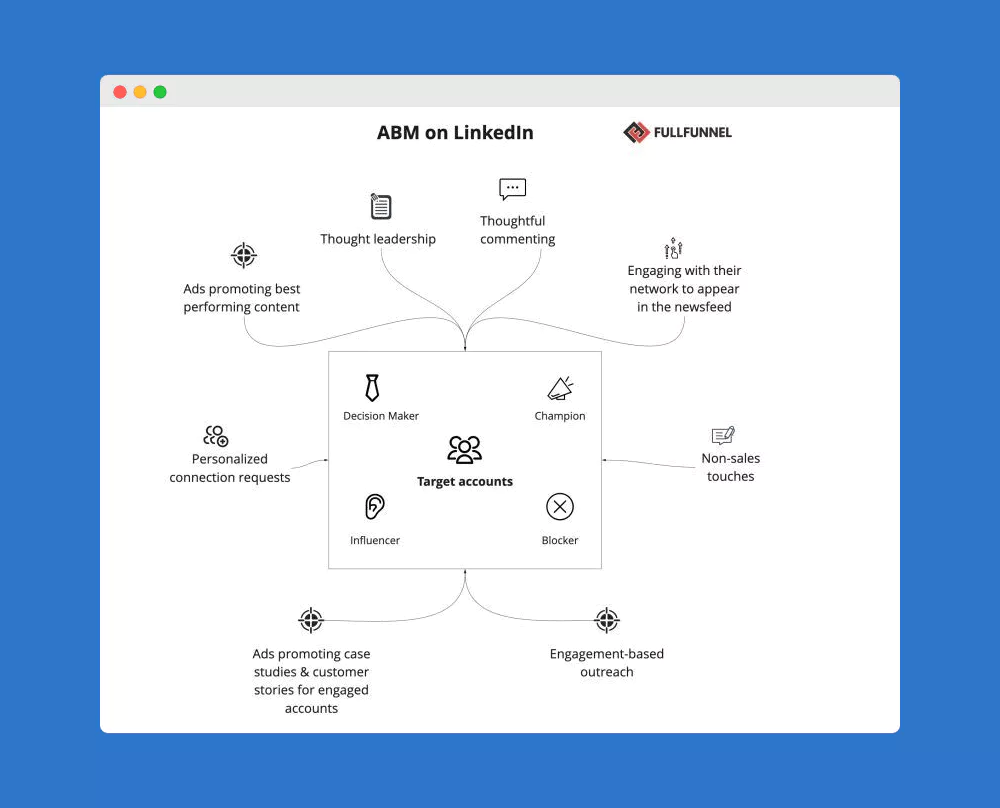
What Criteria Can Be Used to Define LinkedIn Audiences?
Reaching your ideal customer persona (ICP) on LinkedIn requires precision and strategy. LinkedIn audiences can be segmented in a variety of ways, allowing you to tailor your messaging to specific groups. In this section, we’ll explore the most effective LinkedIn targeting options, ensuring your campaigns connect with the right audience.
LinkedIn Targeting Options: A Breakdown
When setting up a LinkedIn campaign, the sheer number of targeting options available can feel overwhelming. In addition to basic filters like location and language, LinkedIn offers over 30 categories that allow for fine-tuned audience targeting. We’ll touch on the key areas to help you maximise your campaign’s success.
LinkedIn’s targeting features are divided into two major categories:
- Audiences: Custom audiences you’ve created in LinkedIn Ad Manager, often derived from your existing data.
- Audience Attributes: Native LinkedIn data drawn from users’ profiles, such as job titles, companies, and interests.
Source: LinkedIn
Matched Audiences
To use LinkedIn’s Matched Audiences feature, you need to have pre-built lists of contacts or companies. This enables LinkedIn retargeting and tailored content delivery to individuals already familiar with your brand.
Types of Matched Audiences:
- List Upload: You can upload CSV lists of companies or contacts directly into LinkedIn Ad Manager. LinkedIn provides templates for easy formatting.
- Lookalike Audiences: This feature targets individuals who share similar characteristics with your existing audience, expanding your reach effectively.
- Retargeting: Engage users who have interacted with your brand previously, such as visiting your LinkedIn page, opening a lead generation form, or attending a company event. This type of LinkedIn retargeting helps to re-engage warm leads and improve conversions.
- Third-Party Data Integration: Through partnerships with third-party data providers like Acxiom and HG Insights, LinkedIn allows you to create audiences based on external insights. For more sophisticated data, you may need to coordinate with a LinkedIn representative.
Audience Attributes
LinkedIn targeting becomes even more robust when you use Audience Attributes. These are native criteria that rely on data pulled from user profiles.
Examples of LinkedIn Audience Attributes:
- Company: Target based on the company type, such as industry, size, revenue, or even specific named companies. You can also target followers of your LinkedIn company page or employees connected to specific organisations.
- Demographics: While LinkedIn doesn’t allow discrimination based on age or gender in certain sectors (like employment or education), it does provide these attributes for targeting in other contexts.
- Education: Filter users by their educational background, degree, or field of study to focus on audiences that meet your desired criteria.
- Job Experience: One of the most valuable aspects of LinkedIn campaigns is targeting users by job function, seniority, or years of experience. For instance, if your target audience consists of decision-makers in the IT sector, this feature allows you to focus on professionals in leadership roles.
- Interests and Traits: Leverage the power of user-generated data like LinkedIn groups, shared interests, and behavioural traits. You can target users who belong to specific groups or are interested in particular business topics. Additionally, LinkedIn allows targeting based on more personal attributes, like career changes or frequent travel habits.
The Power of LinkedIn Groups
LinkedIn Groups offer a unique opportunity to engage with specific niches. Groups focused on your industry allow you to share insights, answer questions, and establish yourself as a thought leader. By joining groups relevant to your sector, you can also identify potential clients and build relationships through value-driven discussions, which can significantly enhance the success of your LinkedIn campaigns.
Our Tactical Recommendations
Leveraging LinkedIn’s advanced search features is crucial for connecting with decision-makers; clients often see increased response rates when they strategically target their connections. Consistent engagement by sharing valuable insights and participating in discussions helps build stronger relationships with your audience, fostering trust and loyalty.Get In Touch
Common Pitfalls in LinkedIn Audience Targeting
To maximise the effectiveness of your LinkedIn ad campaigns, avoid these common mistakes:
1. Failing to Define Your Audience
One of the biggest errors businesses make is not being specific enough about their LinkedIn audiences. Without a well-defined customer profile, your ads are likely to reach an irrelevant audience, resulting in wasted ad spend and poor engagement.
Solution: Create a precise ICP by considering factors such as job title, company size, and industry. Use LinkedIn’s robust targeting tools to ensure your ads are reaching the right people.
2. Neglecting Ad Creatives
Even with excellent targeting, poor ad creatives will hinder performance. Your audience expects high-quality visuals, compelling copy, and a clear call-to-action. Without these elements, your LinkedIn campaigns will underperform.
Solution: Tailor your ad creatives to resonate with your audience’s pain points. Use engaging visuals and persuasive language to compel them to take action.
3. Skipping A/B Testing
Many marketers make the mistake of not testing variations of their ads. Without testing different ad formats, messaging, and targeting options, you may miss opportunities to optimise and improve performance.
Solution: Conduct A/B testing on different LinkedIn targeting options, ad formats, and messaging to identify what resonates most with your audience. This will allow you to continually refine your approach and achieve the best results.
